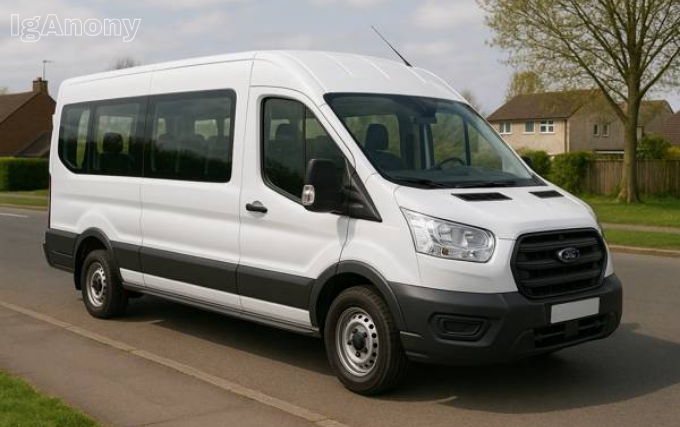Small organisations often face significant transport challenges when moving staff, clients, or equipment between locations. Finding cost-effective solutions that meet specific needs without breaking the budget requires careful consideration of various options. The right vehicle can make a substantial difference to operational efficiency and running costs.
Transport Challenges Facing Small UK Organisations
Small organisations across the UK face mounting pressure with transport logistics. Schools, care homes, and community groups often struggle with rising fuel costs and vehicle maintenance expenses.
Budget constraints frequently limit activity planning, with many organisations forced to cancel trips or reduce services due to transport limitations. The administrative burden adds to these challenges, as staff must coordinate multiple vehicles or manage relationships with various transport providers.
Environmental regulations affect planning and procurement decisions for organisations operating vehicles in urban areas. Low Emission Zones in UK cities require checking each vehicle’s emissions rating. Organisations must review documents and use online tools to confirm eligibility before travel.
The situation is particularly difficult for rural organisations, where public transport alternatives are limited. These groups often face higher per-mile costs due to longer journey distances and fewer service providers in their areas.
Comparing Vehicle Options for Group Transport
When assessing budget transport solutions, organisations must consider capacity, cost-efficiency, and practical requirements. Standard cars offer limited seating and storage, typically accommodating just 4-5 people with minimal luggage space. Vans provide more cargo capacity but often lack proper passenger seating and safety features.
A compact nine-seat minibus for sale often serves as a practical starting solution, as these typically can be operated on a standard UK driving licence (category B). This lets staff handle drives without the added cost or time associated with gaining a D1 licence.
Where demand increases, moving up to a seventeen-seat model is a logical progression. This size supports larger groups and cuts down on required trips but does require drivers to hold a D1 licence. Many schools and community groups look at school minibus leasing options to access these larger vehicles without major capital investment.
Cost-Benefit Analysis of Ownership vs Alternatives
The decision to purchase a vehicle requires careful financial analysis. Actual pricing for new and used minibuses varies widely in the UK market depending on manufacturer, model, age, and specifications. Specific pricing data can be checked on leading dealership sites or through vehicle valuation guides.
Factoring in ongoing expenses completes the picture of total vehicle cost. Annual insurance, road tax, MOT testing, and regular servicing each contribute to operational budgeting.
When ownership presents uncertainties over future vehicle needs or budget limitations, leasing is often considered as another option. Many lease contracts include routine maintenance, which limits the risk of unexpected repairs.
Essential Features for Organisational Transport Vehicles
Any organisation seeking a minibus must check that all required safety features under UK law are present and functioning. All new minibuses registered after October 2014 must come with electronic stability control and anti-lock braking systems to comply with UNECE Regulation 13-H.
In addition, a minibus registered in the UK should display seat belts for every passenger seat, and the working condition of front and side airbags should be verified through workshop checks carried out before purchase. For extra passenger protection, review the model’s available advanced driver assistance systems in the vehicle handbook.
Wheelchair accessible minibuses remain necessary for public service organisations. The Equality Act 2010 requires reasonable adjustments to transport services, making features like low-entry steps, grab handles, and wheelchair securing points important. For larger group vehicles such as 17 seaters, wheelchair lifts or ramps may be present to support accessibility requirements.
Once these statutory safety and accessibility requirements are addressed, groups often compare other features that influence comfort and flexibility. Schools need luggage storage for equipment and supplies, while care facilities look at interior layouts for accommodating mobility aids and medical devices.
Funding and Procurement Strategies for Vehicle Acquisition
UK organisations can access various funding streams to support vehicle purchases. The Community Transport Association offers grants between £5,000 and £25,000 for qualifying groups. Local authorities frequently provide match funding for community transport initiatives, while the National Lottery Community Fund considers vehicle purchases that improve community access.
Building a strong business case involves a clear demonstration of need, usage projections, and financial sustainability. Successful applications typically include detailed cost analysis, evidence of community support, and plans for increasing vehicle use beyond primary purposes.
The used vehicle market offers major savings but requires careful navigation. When considering a used minibus for sale UK buyers should verify full service history, conduct thorough mechanical inspections, and check for outstanding finance.
Getting the Most from Your Vehicle Investment
Making smart transport investments requires careful attention to fuel efficiency, maintenance costs, and accessibility features. Electric minibuses are gaining popularity as community transport options, offering lower running costs and environmental benefits for organisations operating in urban areas.
After purchase or signing a lease, gaining the most benefit from that investment depends on effective scheduling and record-keeping. Scheduling systems enable more efficient use of each vehicle, directly impacting return on investment. For instance, community transport organisations use digital platforms for managing shared minibus pools.
Income streams can develop once systems show spare capacity or flexible availability. Groups may deliver transport for partner organisations during off-peak hours, while schools might contract weekend transport to sports clubs.
A routine preventative maintenance programme helps protect that investment and maintain service reliability. Following maker-specified servicing intervals reduces the risk of costly breakdowns.







